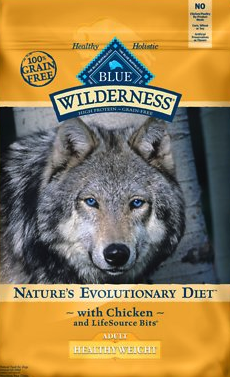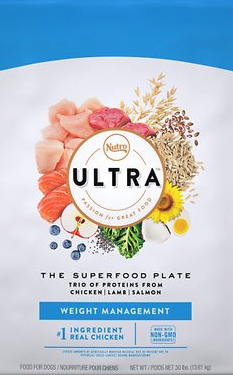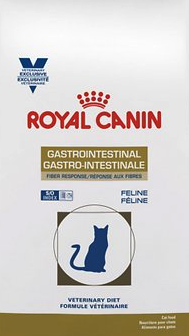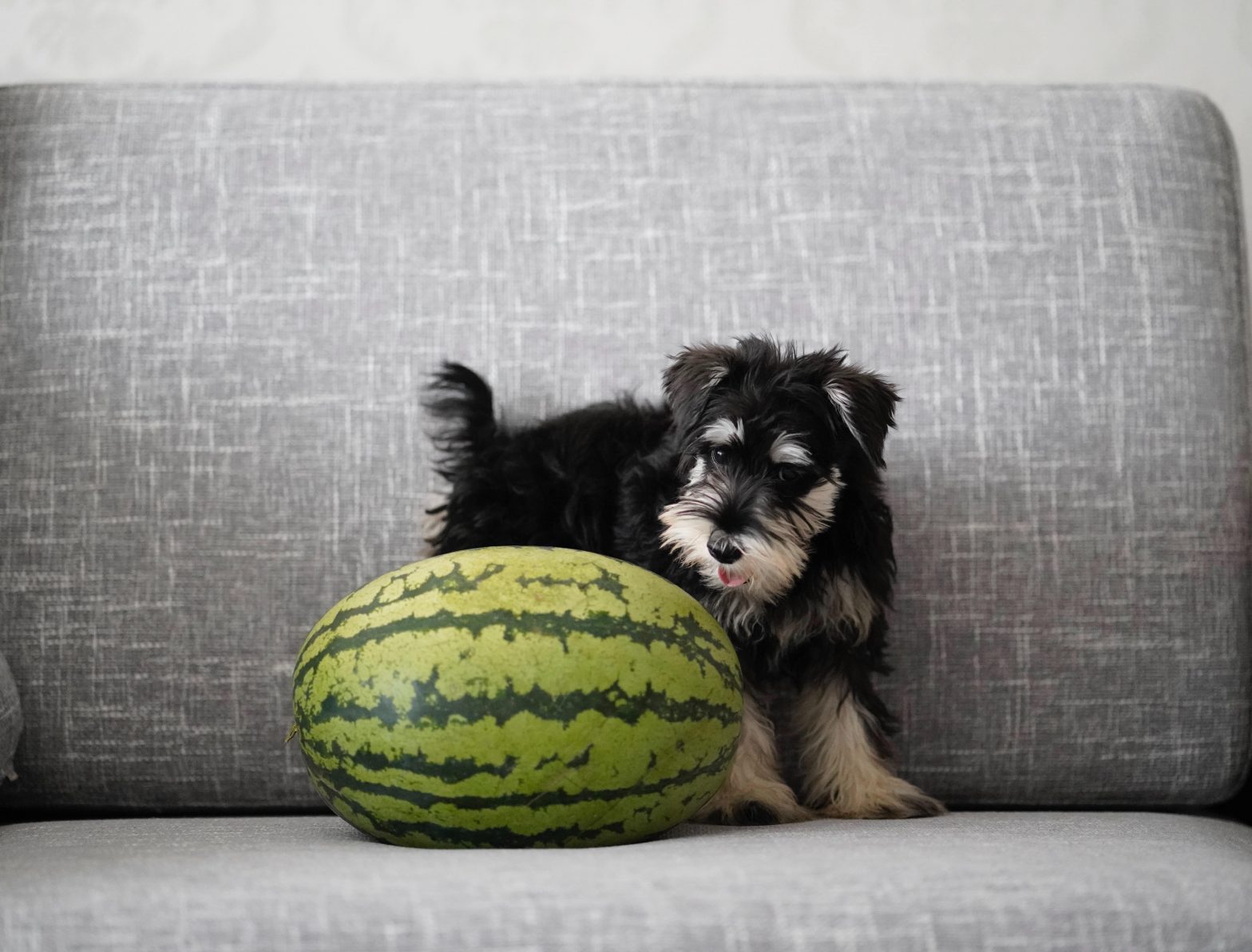If you’ve taken any time to delve into your dog’s diet online, or researched what fiber is and why your dog needs it, you’d be surprised by how many high fiber diet recommendations there are. Much like humans, our dogs need high-quality fiber in their diets to ensure they’re not suffering from digestive system issues or struggling to pass food on a regular basis.
It might be worth it for you to direct some of your hard-earned cash toward getting your dog some of the best high fiber dog food you can find at the supermarket, though keep in mind that the highest price doesn’t always mean high protein or high fiber content! We suggest taking a look at our guide below for some information on dietary fiber, kibble size as well as your pet food’s ability to affect bowel movements in your dog.
In this post, we’ll take a look at the ins and outs of high fiber dogs foods, as well as grain-free options that are perfect for those dogs who might have sensitive stomachs.
Recommended High Fiber Dog Food

Blue Wilderness – Blue Buffalo Healthy Weight Chicken Recipe
Boasts plenty of real meats and products, high fiber content as well as being grain free, helping to improve weight management and weight loss.

Nutro – Lite Weight Management
Packs a load of antioxidants, a high fiber content and a real meat-based formula with lamb and chicken being the primary source of protein.

Royal Canin – Gastrointestinal Fiber Response
Designed to assist specifically with stomach and dog’s stool problems and features plenty of fiber, omega-3 and is based on chicken.
What is Fiber, and Why’s it in Dog Food
As you might already know, fiber is essentially a nutrient that the body can’t break down, making it the ideal nutrient to transport food through the digestive tract. In general, dog’s aren’t too good at keeping their digestive tracts running smoothly, so as a pet owner, it’s a food idea to help them out by providing plenty of high fiber foods for them to eat.
In dog foods, soluble fiber is the ideal compound, rather than insoluble fiber, as it ensures everything your dog eats is helped down the digestive tract and is able to be digested and passed correctly. This helps to maintain a healthy weight, but also allowing your dog to reduce their risk of dealing with constipation and stomach pains.
You’ll find that insoluble fiber is a type of fiber that doesn’t absorb water, which means it’s less effective when it comes to assisting with weight loss and digestive health.
Amount of Fiber in Dog Foods
From what we mentioned above, you’re likely intrigued by the amount of fiber in dry food and wet food, and looking for a way to incorporate the best types of fiber into your dog’s diet. Fortunately for dog owners, almost all dog food brands contain plenty of fiber for all of your dog’s life stages, meaning they’ll be getting enough fiber from their protein-rich dry dog food.
Without getting too in-depth, a good majority of dog food brands contain a fiber level of around 2% to 5%, which is ideal if you’re looking for all of the health benefits of fiber for a healthy dog. However, if your dog suffers from digestive problems or has anal gland problems, you might need to brand out to dog food brands with 6% to 10% fiber. It’s always best to stick below 10% though, as this much fiber could also cause digestive issues in itself, so stick to 6% to 10% and you’ll be ensuring fiber intake is ideal.
One problematic thing to keep in mind is that fiber helps dog food companies in reducing the number of quality ingredients found in their formula. The more fiber stacked into the kibble, the less expensive it is to create, so be wary of cheaper brands that contain a tonne of fiber supplements or an overly dense source of fiber.
Where You’ll Find Fiber
Looking beyond just dog food, you’ll also find that fiber naturally occurs in so many plants and foods that your dog already loves to eat! A number of veggies are packed to the gills with fiber and there’s also a tonne of fiber in fruits, whole grains, and other plant-based foods, so certainly consider adding a few carrots, sweet potatoes and even canned pumpkin to your dog’s kibble mix and they’ll certainly thank you when it comes time to use the bathroom.
A few non-kibble sources of fiber include:
- Beet Pulp
- Carrots
- Flaxseeds
- Apple
- Green Beans
- Brown Rice
- Oats
- Sweet Potatoes
- Whole Grains
Now that you’ve got an insight into all of the great foods that add fiber to your dog’s food, it will be so much easier for you to give your dog the recommended level of fiber each day, without buying specific fiber-rich kibble or other new food.
Why You Should Choose High Fiber
Just like humans, dogs really do need low-fat high fiber diets that help them feel, digest and pass their food a lot easier. If you’re not giving your pup enough fiber in their diet, you’ll notice quite quickly that they’re having trouble going to the bathroom, or not often going to the bathroom at all, simply because it’s too difficult.
We’ve listed a few of the main reasons you should be giving your dog plenty of fiber content in their meals below, and what happens if you don’t.
Improved Digestion
One of the biggest perks of feeding your dog plenty of fiber is that they’ll have a far more efficient digestive system. This can reduce stomach pain and also ensures your dog feels their best throughout the day.
Into the technicalities, fiber is what pulls water from the stomach into the digestive tract – as long as you’ve chosen soluble fiber. As a result, this will limit the chances of constipation and also is your best bet at reducing the chances of your dog suffering from diarrhea. Lastly, as fiber brings a lot of ‘heft’ with it, into the stomach and digestive system, it helps your dog in passing their food and keeps things moving correctly inside the intestine.
Overall, fiber really is fantastic for your dog. Hit the mark on their fiber intake and you’ll say goodbye to almost all stomach problems, irregularities, and even weight management problems. Just be sure to choose fiber that comes from natural ingredients first, rather than kibble.
Improved Blood Sugar Levels and Glucose Management
A particularly important perk of fiber for adult dogs is that it enables easy management of blood sugar levels, even if they’re fairly inactive. Far too many pet owners feed their dog’s heavy carbs or high carb diets which results in increased blood sugar and weight gain. Although this isn’t the desired outcome, older dogs are simply not as active as younger dogs and don’t make use of all the carbs they’re eating.
Fiber greatly assists here as it’s incredible at appetite suppression. Your dog won’t be constantly snacking or hungry if their diet consists of fiber. You’ll also find that because of this, a high fiber diet can actually help your dog lose weight.
Diabetic dogs will also greatly benefit from blood sugar lowering high-fiber diets as they’ll be better able to manage their blood sugar, keeping them feeling fresh and in a good mood. The fiber helps to reduce carb cravings and also sugar intake into the system which essentially reduces feelings of nausea.
Helps Dogs to Feel Full
As we mentioned above, fiber is great at reducing appetite and keeping our pets feel full even if they haven’t eaten a whole lot. For pet owners putting their dogs on limited ingredient diets, or small diets in general, fiber will be a major help here. Since fiber isn’t able to be digested by the body, it simply sits in the stomach and takes up space, effectively making your dog feel full but not gain any weight from their full stomach.
Keep in mind however that your dog will still need plenty of high-quality dog food for them to get their recommended daily intake of nutrients. Be sure to continue incorporating probiotic-dense foods and proteins like chicken meal into their diets, but add some fiber for hunger or appetite suppression if you’re trying to help them lose some weight or manage their weight.
What to Remeber About High fiber Foods
Regardless of the type of dog food you’re looking for, there are a whole range of key factors to keep in mind. When you visit the supermarket there are a tonne of dog foods to choose from, though they’re all formulated differently, for different breeds, breed sizes as well as specific dietary requirements. You wouldn’t want to feed a large dog a toy dog breed’s food, so be sure to take a look at the fiber content and nutritional value.
We’ve listed a few of the key things you need to remember about high fiber foods, and dog foods in general.
Protein is Still Number One
Without a doubt, protein must remain at the top of your list when looking for ideal pet food for your dog. Dogs are omnivores, however, a majority of their nutritional value is a protein which comes from animal products in pet foods, which means you’ll need to take it upon yourself to add other protein sources.
In general, your dog should be placed on primarily a meat-based diet regardless of the foods available to you. Take a look through the pet food aisle and look out for dog food or kibble that based mostly on meats like chicken, fish, beef, and lamb. Stray from the meat by-products as you’ll find there’s rarely any nutritional value in these – more on this below.
No By-products or Not Identified Products
Again, much like human foods, it’s not a good idea to choose foods packed with preservatives and other by-products. There’s a good chance that most of these products are okay for your dog to eat, such as liver, intestine, cartilage and more – though there are a few by-products that they certainly shouldn’t be eating on a routine basis!
We suggest choosing a trustworthy, quality-focused brand like Taste of the Wild or Blue Buffalo when it comes to choosing a high fiber food that your dog will love, and get true nutritional value from.
In short, if you see the words, ‘pork byproducts’ or ‘poultry byproducts’ or anything similar, it’s in your best interest, and the interest of your dog to skip over these foods.
Stray from Artifical Colors and Flavors Too
Another big no-no are artificial additions to foods. In high fiber foods, there can often be a lot of fiber and not a whole lot of flavor, making the food taste rather bland. What you’ll find is that most brands like to pump their kibble and wet mix with artificial colors and flavors to make them look and taste incredible to your pup, even though they’re not really eating anything at all, just by-products and grains.
Where the trouble comes in is that your dog will love their food, even though it’s giving them no immune system boost, and could actually be driving them to develop colon cancer if the food contains fermentable fibers.
Essentially, we really do suggest keeping a lookout for any mention of preservatives, or lack of disclosure. You’ll want to do your best to stay away from ‘fake’ foods.
Find Fatty Acids, Omega-3s, and Nutrients
One section of dog food packaging you should be looking be looking directly at are the mentions of the fantastic fatty acids, omega-3s and more. With these in check, you can rest assured that you’re investing in a food that’s not only going to help your dog’s stools stay bulked up and regular, but you’re also able to ensure they’re getting everything they need to build a strong immune system and healthy skin too!
A majority of the omega-3s you’ll find in dog food are from fish and vegetables, so foods with high contents of these are going to be a good buy. These nutrients are fantastic when it comes to dealing with inflammation, immune function and more, so if you have a pup who is often sick or doesn’t see a vet all too often, then a source of omega-3s and fatty acids is a good idea.
Look at the Flag
As we do with healthcare products, you should always look where your dog food was manufactured or produced. Just because it’s on sale here doesn’t mean that it was held to the same standards as local brands when being manufactured! We suggest choosing dog foods that are directly out of countries with high safety standards such as Australia, New Zealand, the US, and Canada.
Don’t Forget Probiotics
Lastly, you should always make it a priority to look for a few added benefits such as probiotics and antioxidants. If you’re feeding your dog a high fiber diet, there’s a good chance you care about their gut health, and there’s nothing better for your pup’s stomach than probiotics. These are what keep stomach bacteria in check and keep everything digesting properly.
So, Why High Fiber?
To cap off our guide we’ll take a look at why high fiber food must find its way into your dog’s diet and what types of issues it might be able to treat for you! Not only does fiber help pet owners control their dog’s appetite, but it also gives your dog a better chance at increasing their lifespan as well as feeling more comfortable in everyday life.
A few common problems you’ll be able to repair with a high fiber diet include:
Obesity or Weight Gain
As we mentioned above, one of the most obvious perks of a high fiber diet is its ability to help dogs lose weight rather easily, and very fast! A few weeks of putting your dog on a high fiber diet will have them well and truly on the way to losing weight, and thanks to fiber’s hunger suppression abilities, your dog won’t be complaining or begging you for their next meal.
Stomach Pains and Inflammation
If you make it a priority to select a pet food brand that focus on healthy fiber and probiotics, you’re going to be on the way to curbing irritability, stomach pain, and inflammation! Almost all common stomach problems in dogs are caused by a lack of fiber or an incorrect balance of bacteria that many high fiber dog foods can fix for you.
Diabetes and High Blood Sugar
A final incredible benefit of a high fiber diet is the ability to get a hold of high blood sugar and diabetes in dogs. As your dog will feel full for longer, they’ll be utilizing the food they’ve already eaten for energy, rather than looking for more, which helps them to reduce blood sugar. In the end, your dog will find it a lot easier to reduce their food intake, get in some exercise as well as cut down blood sugar levels.
Our Top Picks
For those looking for the best high fiber dog food brands, we suggest the following:
Blue Wilderness – Blue Buffalo Healthy Weight Chicken Recipe
Boasts plenty of real meats and products, high fiber content as well as being grain free, helping to improve weight management and weight loss.
Nutro – Lite Weight Management
Packs a load of antioxidants, a high fiber content and a real meat-based formula with lamb and chicken being the primary source of protein.
Royal Canin – Gastrointestinal Fiber Response
Designed to assist specifically with stomach and dog’s stool problems and features plenty of fiber, omega-3 and is based on chicken.

